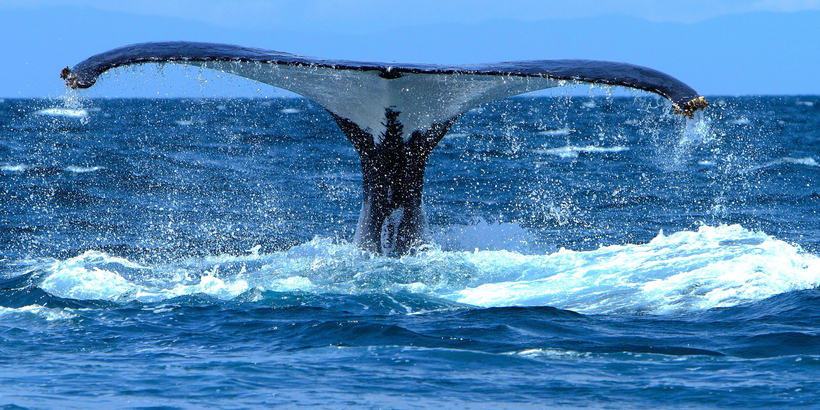Whales store huge amounts of CO2. They support the growth of phytoplankton, which stores 40% of all carbon produced. A 1% increase in phytoplankton productivity is equivalent to 2 billion mature trees.
They are majestic, massive and mysterious—and they could hold a secret for combating climate change.
Now, researchers have put a price on the value that whales bring to the world.
The International Monetary Fund (IMF) has estimated the value of a single great whale at more than $2 million—which comes to more than $1 trillion for the current stock of great whales.
The IMF based its figures on each whale’s contribution to carbon capture, the fishing industry and the whale-watching sector, which is worth over $2 billion.
If we helped whales return to their pre-whaling numbers of 4 to 5 million (up from 1.3 million today), researchers say they could capture 1.7 billion tonnes of CO2 annually—with the cost of protecting them at just $13 per person a year.
The IMF has estimated the value of a single great whale at more than $2 million—which comes to more than $1 trillion for the current stock of great whales.
Over a lifespan of around 60 years, whales—especially great whales, such as right and grey whales—accumulate an average of 33 tonnes of CO2. When they die, they sink to the bottom of the ocean, locking that carbon away for hundreds of years.
By comparison, a tree absorbs up to 48 pounds of CO2 a year.
Part of the carbon capture potential for whales comes down to their role in increasing phytoplankton productivity wherever they go—a phenomenon called the ‘whale pump’.

As they rise up through the ocean to breathe and migrate across the globe, the iron and nitrogen in their waste provides ideal growing conditions for these microscopic creatures.
And while they may be small, phytoplankton play an enormous role in regulating our atmospheric conditions—contributing at least 50% of all oxygen and capturing an estimated 37 billion tonnes (40%) of all CO2 produced.
The IMF calculates that’s the same as the amount captured by 1.7 trillion trees, or four Amazon rainforests’ worth.
A 1% increase in phytoplankton productivity linked to whale activity could mean the capture of hundreds of millions of tons of additional CO2 a year, equivalent to 2 billion mature trees, according to the IMF.
Over a lifespan of around 60 years, whales accumulate an average of 33 tons of CO2. By comparison, a tree absorbs up to 48 pounds a year.
But the world’s whales are at risk—impacting on their ability to help us tackle climate change.
Although commercial whaling has been officially banned since 1986, more than 1,000 whales a year are still killed for commercial purposes, according to the World Wildlife Fund (WWF).
Whales are also at risk from ship strikes, fishing nets and plastic pollution.
At the same time, the concentration of carbon dioxide in the atmosphere is increasing rapidly. In May 2019, the levels of CO2 passed 415 parts per million—the highest level in human history.
The ocean helps to regulate the climate by holding 50 times more CO2 than the atmosphere, according to the International Atomic Energy Agency (IAEA). But even a small change in the way carbon enters the ocean could affect the ocean’s storage capacity.
A recognition of the contribution whales make could be a valuable alternative to costly and untested proposed technological solutions, such as capturing carbon directly from the air and burying it deep underground.
It’s a new way of looking at the whale population—and the impact could be earth-changing.

